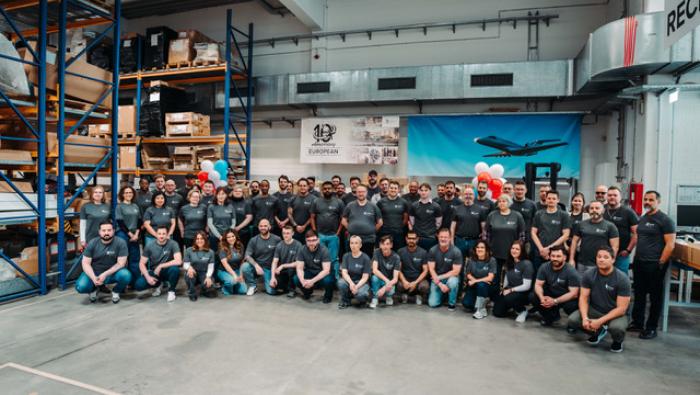If Air Transport Association (ATA) CEO James May has his way, business aviation will start paying more of what he believes is a fair share of the costs of operating the nation’s ATC system. During his presentation at the NATA strategic issues forum on the last day of the AIE show, May outlined his views, couched in an empathetic appreciation of the accomplishments of aviation pioneer Charles Lindbergh.
May extended an “invitation to sit down and figure out how we design the next-generation airspace system.” Citing Lindbergh’s accomplishments, he noted that the famous aviator bridged the “two worlds of general and commercial aviation. His example shows us how close and inseparable those two worlds really are.” May went on to wonder what Lindbergh would have thought of our “modern” ATC system and why it lags behind technological development in other fields.
“Lindbergh,” he said, “who was always so precise and meticulous planning his own journeys, would be shocked and appalled by our lack of progress. More than three-and-a-half decades after landing on the moon it would strike him as very strange to see that we still have an air traffic control system using effectively World War II-era architecture and technology along with analog communications.”
May is well versed in the debate about how to modernize the ATC system and agrees with NATA that the FAA could save money by adopting more technology and using fewer highly paid air traffic controllers. “So why,” he asked, “are we having such a difficult time moving forward with sophisticated efficient air traffic control and communications systems? It has a little something to do with money, doesn’t it? Who pays? And how we divvy up the cost between different users.”
The users of ATC, according to May, are not each paying their fair share to cover the costs of running the system. “The airlines used roughly 70 percent of ATC services in 2004, the last full year available. But they paid just under $9 billion into the trust fund and 94 percent of the cost of ATC services for the year. I’ll say it again: we use 70 percent; we paid 94 percent. [And we’ll say it again too: airline passengers, not the airlines themselves, pay the ticket tax. In terms of FAA funding, the airlines themselves pay only 4.4 cents per gallon of jet fuel burned.–Ed.]
“Meaning that business aviation or others who use 15 percent of the overall ATC services pay just 4 percent. General aviation, apart from business aviation, uses roughly 4 percent of ATC services and pays about 2 percent.
“What ATA is seeking,” he said, “is a pay-for-what-you-use system that allocates costs among all system users.” May exempts piston-powered aircraft from his user-fee concept, although he seems confused about the definition of general aviation and about the fact that piston operators frequently fly IFR.
“It doesn’t mean that ATA supports user fees for general aviation. It’s not true; it never has been. Our blueprint for the future specifically states, ‘Operators of piston-powered general aircraft should continue to pay through their fuel-tax mechanism.’ Piston-powered aircraft flying VFR generally don’t use the same air traffic resources as airlines and business jets and they aren’t significant cost drivers.”
May continues to use the word “onslaught” to describe upcoming very light jets and their effect on the ATC system. “Some people might think that smaller jets exact a smaller cost, but we believe that the size of the jet is immaterial in the ATC context. A business jet imposes the same kind of challenge to the maintenance of air safety as a commercial jet represents…tracked on radar, a blip is a blip. It’s volume that drives system costs today and will drive them tomorrow even more.
“Some estimate that 50 percent of all VLJ flights in the future will begin or end at the top 16 metro markets. It’s not just where the airplane takes off and lands; it’s the airspace that it uses along its route that drives costs. Traffic jams occur at choke points and have ripple effects throughout the system. If we don’t figure out a way to address that, every airplane in the sky is going to begin to feel the pinch at some point.
“We need to adopt a sustainable, equitable funding mechanism,” May concluded, “that reduces the cost and increases the capacity and efficiency of the current system. We need to build a system that accommodates all system users and growth.”
NATA president Coyne was expecting the FAA to deliver a formal user-fee proposal late last year. “It suggests that maybe the administration is taking a slower approach to this,” Coyne said after the NATA show. “With the changing political dynamics of the White House, they probably decided that this is not a good time to bring this issue forward. I think it’s going to be a battle fought next summer.”
Nevertheless, ATA’s members and May appear to be a big influence behind the user-fee debate. And Coyne thinks that May is positioning ATA as inflexible and demanding, while planning in the future to compromise with the general aviation industry. “I think that when Jim May makes his comment that a blip is a blip,” Coyne said, “he loses all credibility with me. That’s not the policy anywhere in the world.”







